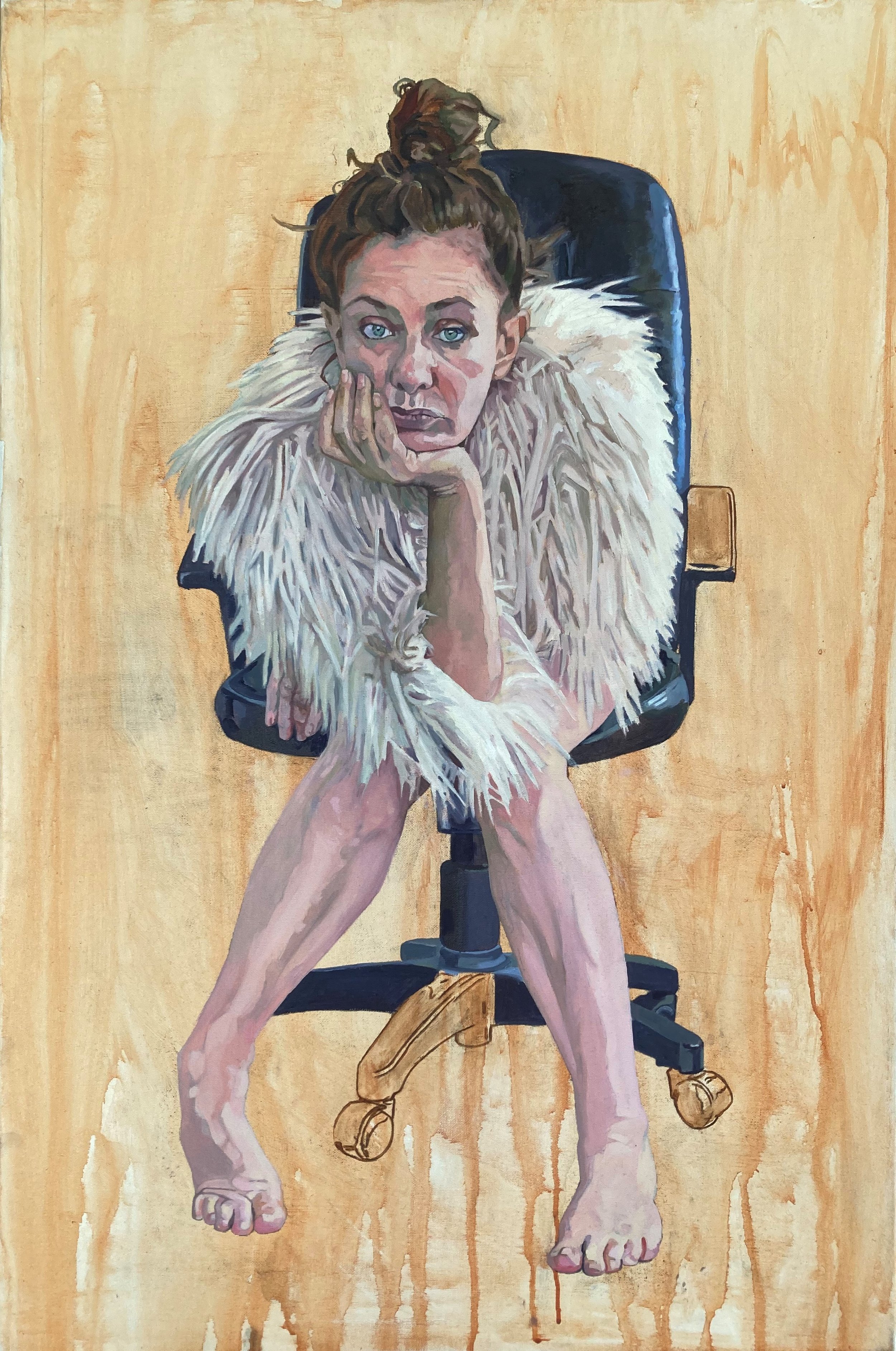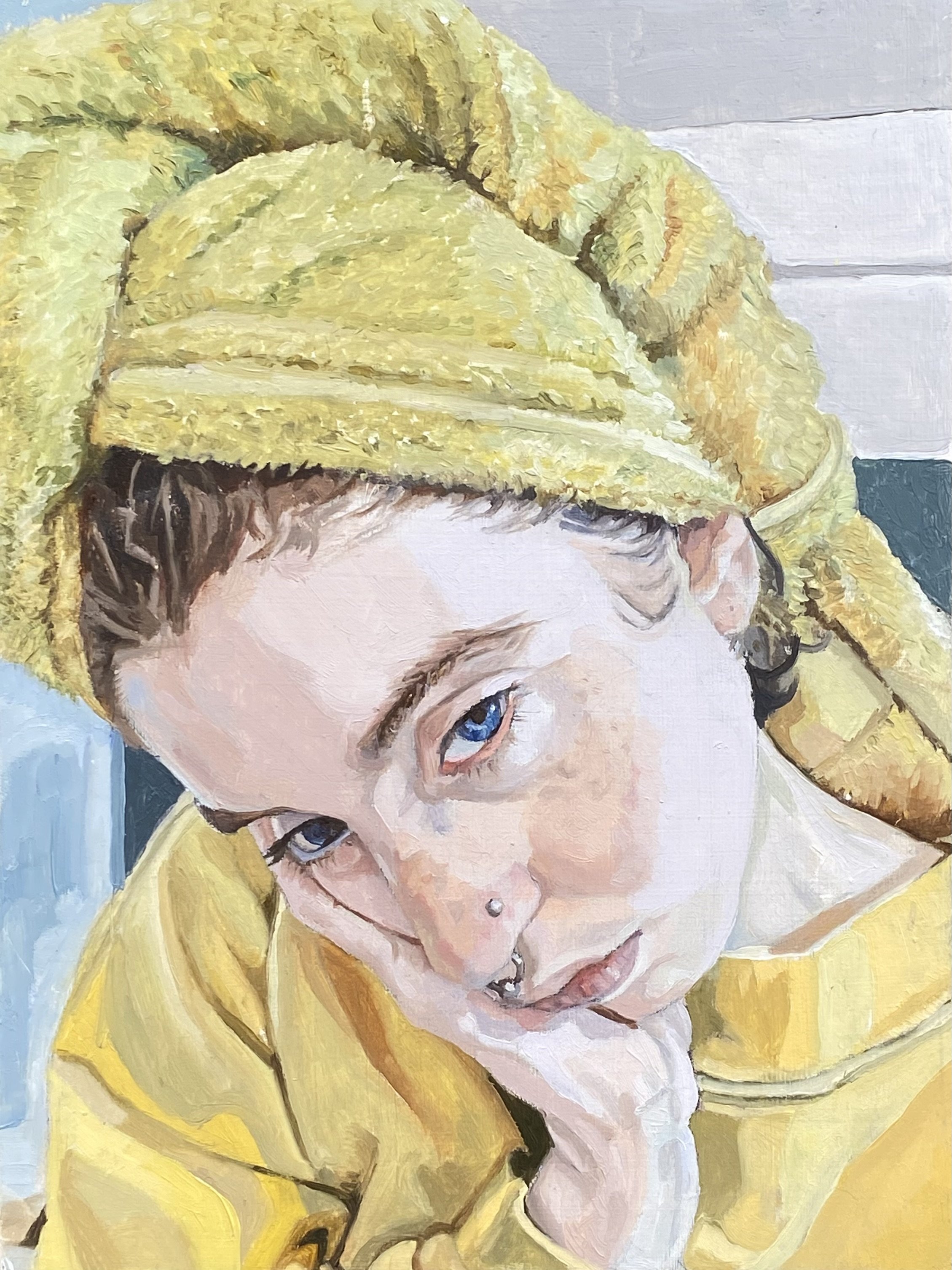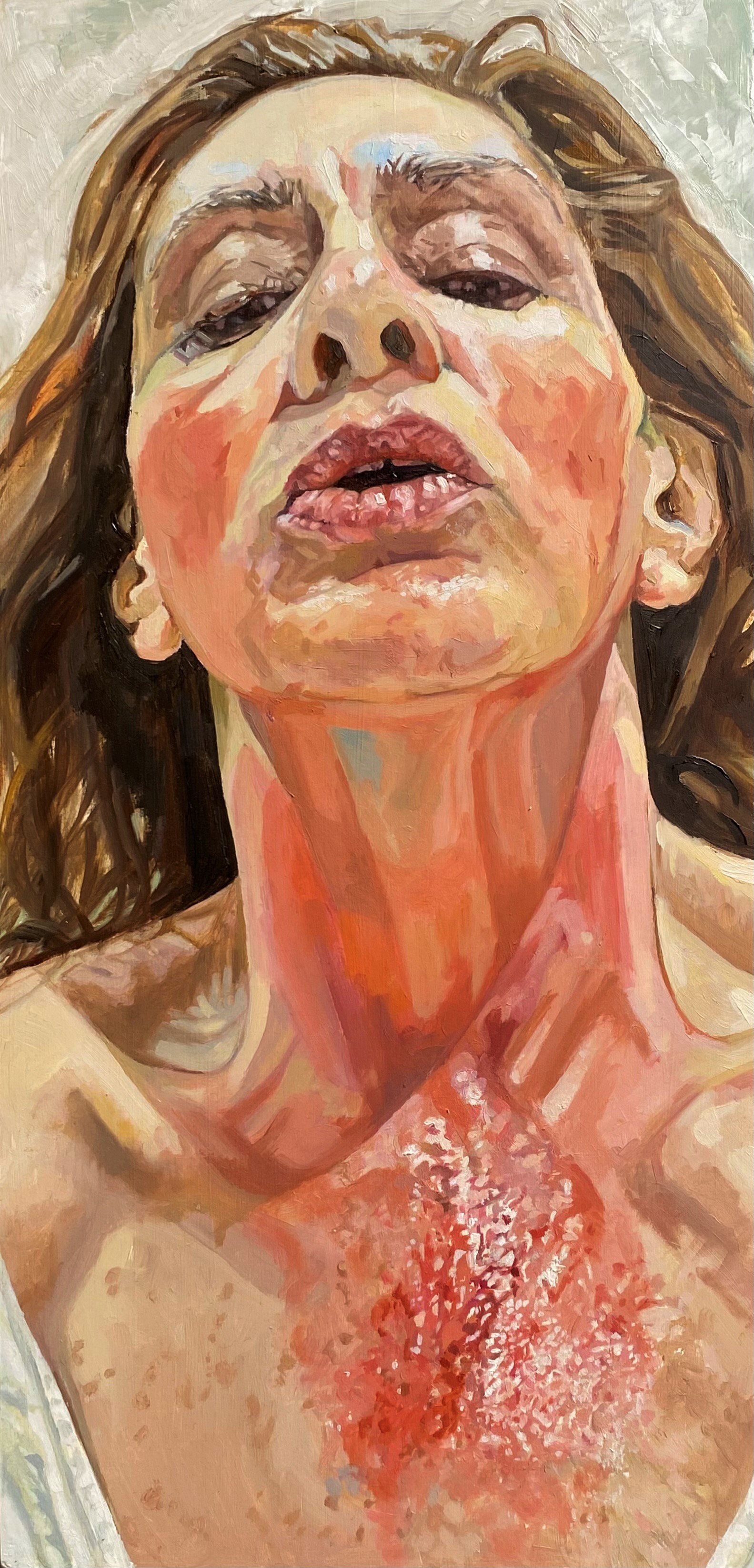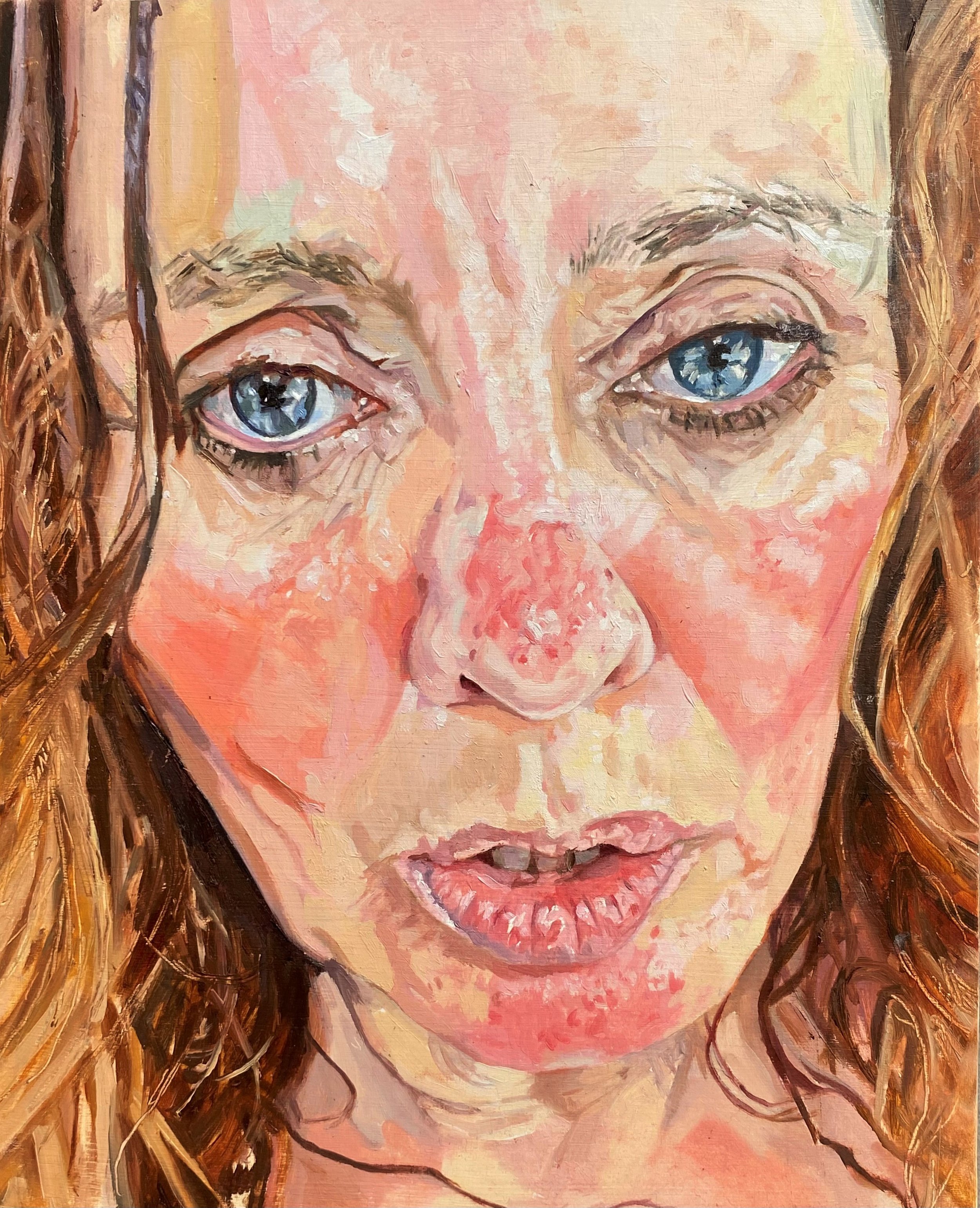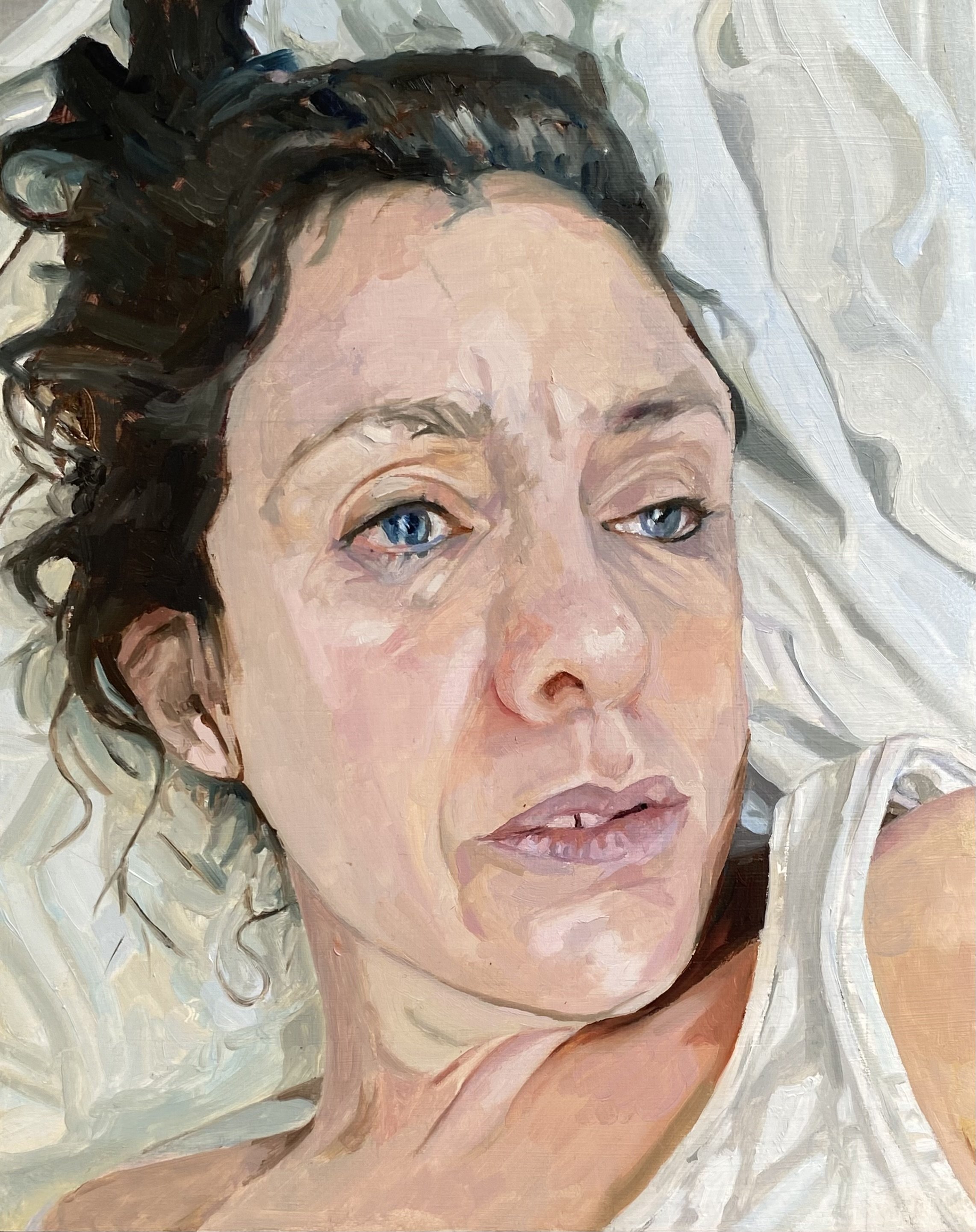ARTIST INTERVIEW: Sara Gregory
Please can you tell me about yourself
Hi, I am Sara, I am primarily a portrait and figurative artist.
I initially started my career as an Art teacher, which I happily did for 25 years. It was a milestone birthday that made me stop and take stock of what was important for me going forward. I always dreamed of being an artist but felt that I couldn’t risk the financial insecurity that, I believed, came with this choice.
With my children all grown up and with the restraints that lockdown imposed, it freed me up to think again and to give myself time to explore my passion. I started painting again and I joined a community of artists with a shared studio called ‘Studio Fridays’ in Whetstone, which gave me a place to work and time with like-minded creative people.
What inspired you to paint?
I was a quiet and shy child who found spending time drawing and painting a relaxing escape. This coupled with visiting art galleries and being mesmerised by the feelings and emotions captured in some of the paintings made me tell my teacher way back in Primary school that I was going to be an ‘Artist’ when I grew up. I was always drawn to looking at painted portraits as I was fascinated with trying to decipher the thoughts and feelings behind the expressions and the stories that could be told with just a pose or an expression.
Describe your creative process; from start to finish of a painting. Where do you find your inspiration?
I usually start with an idea that I am interested in. This could be something simple such as playing with the way the light falls on the face, or a more complicated theme. Once I have my idea, I like to take lots of photographs to experiment further. This could be the most challenging part of the painting, honing the idea and then taking an image that I think best represents the idea. I then like to draw that image in quite a realistic way. I like to mix lots of different skin tones in both dark and light tones and then layer the paint from thin to thick. I work quite slowly and a small portrait will usually take between 15- 20 hours.
What is your favourite piece of work you have created and why?
My favourite piece of work is any piece of work that I am working on at that time. I get so absorbed in this that it takes over all my thoughts until it is finished. If it’s successful it will remain my favourite piece of work until I start the next one.
My current series is exploring the internal and external experience of Menopause. I am hoping to capture the physical and emotional changes I experienced with a series of self-portraits. I feel this is such an important subject, and with it I am hoping to create some meaningful images whilst raising awareness of the complexities of Menopause and how it can affect a woman’s life. I have lots of different ideas for this, so I am imagining this may be my favourite subject for a while.
Describe your experience painting on Portrait Artist Of The Year. What did you gain from the experience?
I felt so honoured to be selected to appear on Portrait Artist of the Year. I had watched every series since it started, so it was very surreal to be in the Battersea Arts Centre, with the judges and presenters and painting my own sitter. I was really happy to get the chance to paint Alexis French, who came across as genuinely lovely. I found the four hour time limit incredibly difficult and underestimated how tricky it was going to be to focus, draw and paint with lots going on around me. However, the whole experience was incredible and everyone - judges, crew and fellow artists were just so kind and supportive. I would recommend anyone who is considering doing it to just apply. As I said on the show, I will remember it forever. In practising painting 4 hour portraits before the show I had to speed up my whole process which gave me some interesting results. Every now and again I will task myself with doing a quick painting or drawing to loosen up my work and allow me to be more expressive.
Who is your favourite artist and why? Do they have an influence on your work?
This is the hardest question to answer. I have so many artists who I have admired along the way, I could easily make a list of 20 – 30 favourite artists! However, Lucien Freud is the artist that got me into portraits initially. Jenny Saville, as I love her ability to paint flesh and her contemporary imagery, Paula Rego for her story telling and Kathe Kollwitz for the emotional punch she puts into her work. I imagine that, subconsciously, they all have an influence on my work in some way.
Do you work on multiple pieces at a time or just focus on one piece of artwork?
I tend to work on one piece at a time. I am not a great multi-tasker and I tend to get very involved with each individual piece of work.
How has your art changed since you started creating it?
I started off studying sculpture and installation work in Art College. Whilst teaching I found it difficult to find the time to dedicate to my own artwork. During lockdown I started painting portraits, which can be challenging, I hope with each painting I learn from the last one and try to continue to grow and develop. I am particularly interested in trying to keep my paint work expressive.
What do you think makes your work unique?
Although my portraits are realistic I am not trying to create a photographic representation. I aim to try and suggest a story or a mood or atmosphere. I tend to lean towards the sad, so maybe if I was a musician I would be playing ‘The Blues’!
Why do you think art is important in society?
As an Art Teacher, I feel so passionate that Art remains an important part of the curriculum. It is a chance to express your individuality, a place where there are no wrong answers, a quiet time to reflect or do a mindful activity, a place where you can build your skills and gain confidence in your ability. All of these things are important to children and adults alike.
I also believe art can be a powerful way to communicate important issues, such as Paula Rego’s Abortion Series, which can induce change in the way we think and act.






